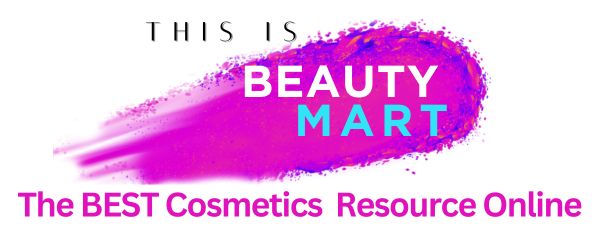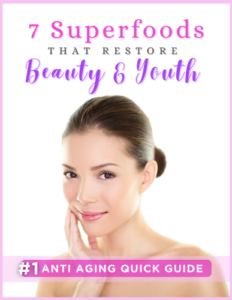Are you struggling with hyperpigmentation and searching for an effective solution? Chemical exfoliants have been proven to be a game-changer in treating this common skin concern. This blog post will guide you through the best chemical exfoliants available on the market in 2024, how they work, and how to choose the one that’s right for your unique skin type.
Ready to reveal brighter, more even-toned skin? Let’s dive in!
Key Takeaways
- Chemical exfoliants, such as AHAs and BHAs, effectively target and reduce dark spots caused by hyperpigmentation.
- Regular use of chemical exfoliants can promote cell turnover, fade dark spots, improve texture, enhance product absorption, prevent clogged pores, increase collagen production, brighten complexion, and provide long-lasting results.
- Alpha hydroxy acids (AHAs), beta hydroxy acids (BHAs), and polyhydroxy acids (PHAs) are the main types of chemical exfoliants for treating hyperpigmentation.
- Some highly effective chemical exfoliants for hyperpigmentation include Dr. Dennis Gross Alpha Beta Universal Daily Peel, The Ordinary AHA 30% + BHA 2% Peeling Solution, L’Oréal Paris Revitalift Derm Intensives 3.5% Glycolic Acid Cleansing Gel, Sunday Riley Good Genes All-in-One Lactic Acid Treatment, and Paula’s Choice 10% Azelaic Acid Booster.
Table of Contents
Best Chemical Exfoliants for Hyperpigmentation 2024
Here are five highly effective chemical exfoliants for hyperpigmentation: Dr. Dennis Gross Alpha Beta Universal Daily Peel, The Ordinary AHA 30% + BHA 2% Peeling Solution, L’Oréal Paris Revitalift Derm Intensives 3.5% Glycolic Acid Cleansing Gel, Sunday Riley Good Genes All-in-One Lactic Acid Treatment, and Paula’s Choice 10% Azelaic Acid Booster.
Dr. Dennis Gross Alpha Beta Universal Daily Peel
The Dr. Dennis Gross Alpha Beta Universal Daily Peel is one of the best chemical exfoliants for treating hyperpigmentation. This peel contains a blend of alpha and beta hydroxy acids (AHAs and BHAs) that work together to effectively target dark spots and even out skin tone.
The AHAs, such as glycolic acid, lactic acid, and citric acid, help to exfoliate the top layer of dead skin cells, while the BHAs like salicylic acid penetrate deeper into the pores to unclog them.
With regular use, this peel can visibly reduce hyperpigmentation and leave your skin looking brighter and more radiant.
The Ordinary AHA 30% + BHA 2% Peeling Solution
The Ordinary AHA 30% + BHA 2% Peeling Solution is a powerful chemical exfoliant that can effectively treat hyperpigmentation. With its combination of alpha hydroxy acids (AHAs) and beta hydroxy acids (BHAs), this solution works to remove dead skin cells, unclog pores, and promote cell turnover.
The AHAs in the formula, such as glycolic acid and lactic acid, help to fade dark spots and even out skin tone. Meanwhile, the BHA – salicylic acid – helps to penetrate deeper into the pores to combat acne breakouts and blackheads.
By using The Ordinary AHA 30% + BHA 2% Peeling Solution regularly, you can achieve a brighter complexion with reduced hyperpigmentation concerns.
L’Oréal Paris Revitalift Derm Intensives 3.5% Glycolic Acid Cleansing Gel
L’Oréal Paris Revitalift Derm Intensives 3.5% Glycolic Acid Cleansing Gel is a highly effective chemical exfoliant for treating hyperpigmentation. With its gentle yet powerful formula, this cleansing gel contains glycolic acid, which helps break down dead skin cells and promote cell turnover.
By regularly using this product, you can improve the appearance of dark spots and uneven skin tone. The 3.5% glycolic acid concentration ensures optimal results without causing excessive irritation or dryness.
Incorporating this cleansing gel into your skincare routine can help you achieve a brighter, more radiant complexion.
Sunday Riley Good Genes All-in-One Lactic Acid Treatment
Sunday Riley Good Genes All-in-One Lactic Acid Treatment is a fantastic chemical exfoliant for treating hyperpigmentation. It contains lactic acid, an alpha hydroxy acid (AHA), which helps to gently remove dead skin cells and reveal a brighter complexion.
This treatment also has anti-inflammatory properties that can help reduce redness and inflammation associated with hyperpigmentation. It’s suitable for all skin types, including sensitive skin, making it a versatile option.
When using this product, be sure to follow the instructions and guidelines for usage to maximize its effectiveness in reducing pigmentation and improving overall skin tone.
Paula’s Choice 10% Azelaic Acid Booster
Paula’s Choice 10% Azelaic Acid Booster is a highly recommended chemical exfoliant for treating hyperpigmentation. With its potent formula containing 10% azelaic acid, it effectively targets dark spots and uneven skin tone.
This booster not only helps to fade hyperpigmentation but also reduces redness and inflammation. It works by gently exfoliating the skin, promoting cell turnover, and revealing a brighter complexion.
This product is suitable for all skin types and can be used both day and night as part of your skincare routine.
Understanding Hyperpigmentation
Hyperpigmentation is a common skin condition characterized by dark patches or spots on the skin, caused by an overproduction of melanin.
What is hyperpigmentation?
Hyperpigmentation refers to the darkening of patches of skin due to an excess production of melanin, the pigment responsible for skin and hair color. This common condition presents itself in various forms such as freckles, age spots, and sun spots caused by over-exposure to the sun.
Other types include post-inflammatory hyperpigmentation which occurs after injury or inflammation to the skin. More serious forms like melasma appear as larger discolored areas on the face or body often triggered by hormonal changes.
The severity and permanence vary but effective treatments are available including chemical exfoliants that reduce excess pigmentation and brighten overall complexion.
Causes of hyperpigmentation
Hyperpigmentation can be caused by various factors, including:
- Sun exposure: UV rays stimulate the production of melanin, leading to dark spots and uneven skin tone.
- Hormonal changes: Pregnancy, menopause, and hormonal imbalances can trigger melasma or chloasma.
- Post-inflammatory hyperpigmentation: Acne, cuts, burns, or other skin injuries can cause dark spots to form during the healing process.
- Aging: As we age, the production of melanin becomes more uneven, resulting in age spots or liver spots.
- Genetics: Some individuals are more prone to developing hyperpigmentation due to their genetic makeup.
- Medications: Certain medications like antibiotics, hormone therapies, and chemotherapy drugs can cause pigmentation changes.
- Skin trauma: Repeated friction or irritation from rubbing or scratching can lead to hyperpigmentation in those areas.
The Role of Chemical Exfoliants in Treating Hyperpigmentation
Chemical exfoliants play a crucial role in treating hyperpigmentation by effectively targeting and reducing dark spots, revealing a brighter and more even complexion.
How chemical exfoliants work on hyperpigmentation
Chemical exfoliants work effectively on hyperpigmentation by breaking down the bonds that hold dead skin cells together. This process helps to shed the outer layer of damaged and discolored skin, revealing fresh, brighter skin underneath.
AHAs, such as glycolic acid and lactic acid, are commonly used chemical exfoliants for treating hyperpigmentation. These acids penetrate deep into the skin, promoting cell turnover and reducing the appearance of dark spots and uneven skin tone.
BHAs like salicylic acid also work well by penetrating pores to unclog them, which can help with acne-related hyperpigmentation. Overall, chemical exfoliants provide an effective solution for improving hyperpigmentation and achieving a more even complexion.
Benefits of chemical exfoliants for hyperpigmentation
Chemical exfoliants offer several benefits for treating hyperpigmentation. Here are some key advantages:
- Promotes cell turnover: Chemical exfoliants work by gently removing the outer layer of dead skin cells, stimulating the production of new cells and promoting a more even skin tone.
- Fades dark spots: By breaking down excess melanin in the skin, chemical exfoliants can help fade dark spots caused by hyperpigmentation, sun damage, or acne scars.
- Improves texture: Regular use of chemical exfoliants can help smooth out uneven texture, revealing smoother and softer skin.
- Enhances product absorption: By removing the barrier of dead skin cells, chemical exfoliants allow other skincare products to penetrate deeper into the skin, maximizing their effectiveness.
- Prevents clogged pores: Chemical exfoliants help unclog pores by removing debris and excess oil from the surface of the skin, reducing the likelihood of breakouts and blackheads.
- Increases collagen production: Certain chemical exfoliants, like AHAs, stimulate collagen production in the skin, which can improve overall firmness and elasticity.
- Brightens complexion: Chemical exfoliants promote a brighter complexion by removing dull and pigmented surface cells, revealing a more radiant and youthful glow.
- Safe for most skin types: Many chemical exfoliants are available in different strengths to suit various skin sensitivities and concerns, making them suitable for a wide range of individuals.
- Can be used at home: Some chemical exfoliants are formulated for at-home use, allowing individuals to incorporate them into their regular skincare routine without needing professional assistance.
- Long-lasting results: With consistent use over time, chemical exfoliants can help maintain a more even and luminous complexion while reducing the appearance of hyperpigmentation.
Types of Chemical Exfoliants for Hyperpigmentation
There are three main types of chemical exfoliants that are effective for treating hyperpigmentation: Alpha hydroxy acids (AHAs), Beta hydroxy acids (BHAs), and Poly hydroxy acids (PHAs).
Alpha hydroxy acids (AHAs)
Alpha hydroxy acids (AHAs) are powerful chemical exfoliants that can effectively treat hyperpigmentation. They work by breaking down the bonds between skin cells, revealing a smoother and brighter complexion.
AHAs like glycolic acid, mandelic acid, malic acid, citric acid, and lactic acid are commonly used in skincare products for their ability to lighten dark spots caused by hyperpigmentation.
These acids exfoliate the surface of the skin, helping to fade discoloration and even out skin tone. Whether you have age spots, melasma, or sun damage, incorporating AHAs into your skincare routine can help improve your hyperpigmentation concerns.
Beta hydroxy acids (BHAs)
Beta hydroxy acids (BHAs), such as salicylic acid or willow bark extract, are excellent options for those with acne-prone or blackhead-prone skin. BHAs have anti-inflammatory properties that help reduce redness and swelling associated with breakouts.
They also work by exfoliating the skin’s surface and inside the pores, making them effective in preventing clogged pores and reducing the appearance of blackheads. BHAs can penetrate oil glands easily due to their lipophilic nature, which makes them a great choice for addressing oily skin concerns.
Poly hydroxy acids (PHAs)
Poly hydroxy acids (PHAs) are a type of chemical exfoliant that can be beneficial for treating hyperpigmentation. PHAs, such as gluconolactone and lactobionic acid, work in a similar way to AHAs by gently exfoliating the skin’s surface to reveal a brighter complexion.
They have larger molecules than other chemical exfoliants, which makes them more gentle and suitable for sensitive skin types. PHAs also have hydrating properties, helping to retain moisture in the skin while improving texture and reducing the appearance of dark spots.
Consider trying products containing PHAs if you’re looking for an effective yet gentle option for managing hyperpigmentation concerns.
How to Choose the Right Chemical Exfoliant for Hyperpigmentation
To choose the right chemical exfoliant for hyperpigmentation, consider your skin type and sensitivity, consult with a dermatologist, patch test before use, follow instructions and guidelines for usage, and use sunscreen regularly.
Consider your skin type and sensitivity
To choose the right chemical exfoliant for hyperpigmentation, it is important to consider your skin type and sensitivity. Different exfoliants may work better for certain skin types, so understanding your own skin is crucial.
For example, if you have acne-prone or blackhead-prone skin, BHAs like salicylic acid or willow bark extract may be recommended. On the other hand, AHAs such as glycolic acid or lactic acid are effective for treating hyperpigmentation in general.
By considering your specific needs and reactions to different ingredients, you can find an exfoliant that works best for you and achieves optimal results.
Consult with a dermatologist
It is highly recommended to consult with a dermatologist before incorporating any chemical exfoliant into your skincare routine. A dermatologist can assess your specific skin type and concerns, making sure you choose the right chemical exfoliant for optimal results.
They can also provide personalized advice on how frequently to use the product and whether it is suitable for your skin sensitivity level. With their expertise, they can guide you in selecting the most effective chemical exfoliant that addresses your hyperpigmentation concerns and achieves the desired outcome.
Remember, consulting with a dermatologist ensures that you are taking the best approach towards improving your skin’s condition.
Patch test before use
Before using any chemical exfoliant for hyperpigmentation, it is essential to patch test the product. This simple step helps you determine if your skin reacts negatively to the ingredients in the exfoliant.
Apply a small amount of the product on a discreet area of your skin, such as behind your ear or on your inner wrist. Leave it on for 24 hours and observe for any signs of redness, irritation, or discomfort.
If there are no adverse reactions during this time, it should be safe to use the chemical exfoliant on your face or body. Patch testing ensures that you can enjoy the benefits of the product without risking any potential side effects.
Follow instructions and guidelines for usage
To achieve the best results when using chemical exfoliants for hyperpigmentation, it is crucial to follow the instructions and guidelines provided. Each chemical exfoliant has its own recommended usage frequency and duration.
By adhering to these instructions, you ensure that your skin receives the appropriate treatment without causing any harm or irritation. Additionally, some chemical peels are better suited for professional use, so it’s essential to consult with a dermatologist before attempting them at home.
Patch testing before applying the product on your entire face can help determine if you have any adverse reactions or allergies to the ingredients. Lastly, don’t forget to regularly apply sunscreen as chemical exfoliation can make your skin more sensitive to sunlight.
Use sunscreen regularly
Regular use of sunscreen is crucial in the treatment of hyperpigmentation. Sun exposure can worsen existing dark spots and lead to the formation of new ones, making it essential to protect your skin from harmful UV rays.
Applying a broad-spectrum sunscreen with at least SPF 30 every day, even on cloudy days, helps prevent further pigmentation issues and allows for better results from chemical exfoliants.
Make sure to reapply every two hours when spending time outdoors, and choose a sunscreen that is suitable for your skin type to ensure optimal protection.
Conclusion
Choose the best chemical exfoliant for hyperpigmentation based on your skin type and concerns. AHAs like glycolic acid and mandelic acid, as well as BHAs like salicylic acid, are effective options to consider.
Whether you’re dealing with melasma, sun spots, or overall uneven skin tone, chemical exfoliants can help you achieve a brighter complexion and improve the appearance of hyperpigmentation.
Consult with a dermatologist if needed and always follow instructions for optimal results.
FAQs
1. What is the best chemical exfoliant for hyperpigmentation?
The best chemical exfoliant for hyperpigmentation treatments often contains AHAs, also known as Alpha Hydroxy Acids, or TCA peels which are specifically formulated to treat dark skin.
2. How does a chemical exfoliant help with hyperpigmentation?
Chemical exfoliants work by fading dark spots and evening out skin tone for improved hyperpigmentation. They offer brightening benefits, reducing pigmentation and promoting a brighter complexion.
3. Which ingredients should I look for in effective chemical peels for hyperpigmentation?
Look for AHAs like fruit acids in your chemical peel products because they possess anti-inflammatory properties essential when treating hyperpigmentation on sensitive dark skin.
4. Are all Chemical Exfoliants good choices to treat Hyperpigmentation?
While many options exist, understanding your specific needs helps when choosing a chemical exfoliant for skin discoloration or selecting one amongst the various available options of chemical peels on dark skin.
5. Can Chemical Exfoliation only aid visibility on my face?
No! Besides visual benefits such as improving uneven tones and offering brightness; it goes deeper by providing underlying remedies through the use of creams enriched with compounds adept at handling all sorts of hyperpigmented skincare needs.



